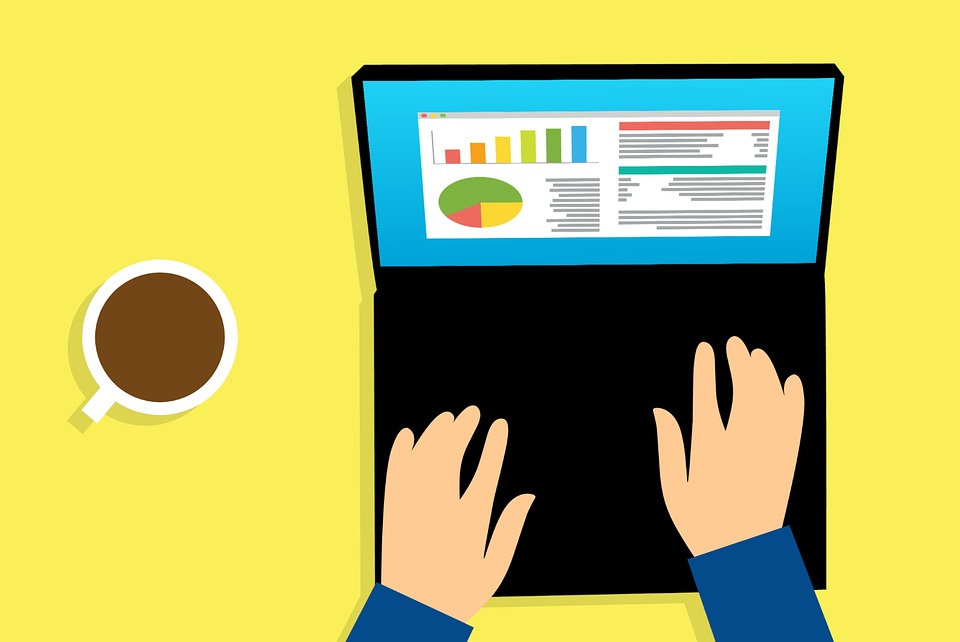
How to Print Chart of Accounts in Quickbooks

A chart of accounts is one of the most important documents in business accounting. Featuring a chart-based layout with columns and rows, it reveals your business’s expenses, revenue, assets and liabilities. While you can always create a chart of accounts manually using pen and paper, Quickbooks simplifies the process by automatically creating them using entries. So, how do you print a chart of accounts using Quickbooks?
Steps to Printing a Chart of Account
To print a chart of accounts in Quickbooks, log in to your Quickbooks account and click the gear icon in the upper-right corner, followed by Settings > Chart of Accounts. This will display your chart of accounts as prepared by Quickbooks. To print the chart of accounts, simply click the box in the upper-right corner of the page titled “PRINT.”
If Quickbooks fails to print your chart of accounts, check your printer settings to ensure they are correct. Quickbooks will automatically attempt to print your chart of accounts using your default printer. If you recently changed printers but still have your old, unconnected printer set as default, it may not print. Therefore, you should inspect the printer settings on your computer or device to see which printer is set as default. And if you don’t see your new printer listed, you may need to install the new drivers (software) for it.
There’s also the possibility that your printer is out of paper. If you don’t hear your printer printing after clicking the “PRINT” button in Quickbooks, look inside your printer’s paper tray to see if it’s empty. Without paper, it won’t print your chart of accounts or any other document
How to Edit an Account Number in Your Chart of Account
After printing a chart of accounts, you may discover that one or more account numbers are wrong. You can easily fix incorrect account numbers, however, in just a few easy steps.
To edit an account number in your chart of accounts, go to the “Lists” menu and choose “Chart of Accounts.” Next, right-click the account containing the wrong account number and select “Edit Account.” Once clicked, you can edit the account number and make other changes to it. Just remember to click “Save & Close” when you are finished to complete the process. Otherwise, Quickbooks won’t save your changes, retaining the old account number instead.
Have anything else that you’d like to add? Let us know in the comments section below!

Shrink Your Company File Using the Condense Data Tool

Want to shrink the size of your company file in Quickbooks? When using the desktop version of Intuit’s popular business accounting software, you’ll have a single file that contains all your business’s financial transactions and records. Known as a company file, it’s the single most important file for accounting purposes. Over time, however, your Quickbooks company file will grow larger, thereby consuming more space on your computer or device. If your company file grows too large, it may cause performance issues like slow loading times and random freezing. But the good news is that you can shrink your company file using the condense data tool.
What Is the Condense Data Tool?
Available Quickbooks Desktop, the condense data tool is a feature that automatically converts closed transactions into journal entries, as well as eliminating unnecessary data, from your company file.
With the release of Quickbooks 2019, Intuit has introduced a new version of the condense data tool. Like earlier versions, it also shrinks the size of company files. The condense data tool in Quickbooks 2019, however, performs this job without deleting or otherwise removing any of your data. The end result is a smaller company file that’s less likely to cause performance issues when using Quickbooks.
How to Use the Condense Data Tool
To use shrink your company file using the condense data tool, log in to your Quickbooks account and access File > Utilities > Condense Data. You will then see one of two options. The first option allows you to retain all transactions in your company file while removing audit trail data. The second option allows you to remove transactions that you specify from your company. Each option will provide an estimation of how much smaller the condense data tool will reduce your company file, such as 30% or 40%.
After choosing your preferred option, click the “Next” button. The condense data tool will then display a notification stating “Working on your file now.” Depending on the current size of your company file, this may take anywhere from a few seconds to several minutes. Once finished, a new window will pop up that tells you how much smaller your company file is.
Keep in mind that there’s no way to reverse the changes from using the condense data tool. After running the tool, your company file will be forever changed. Therefore, it’s a good idea to back up your company file before running the tool.
Did this tutorial work for you? Let us know in the comments section below!

Accrual vs Cash Basis Accounting: What’s the Difference?

Accounting is an essential step to running a business. Regardless of industry, all businesses need to keep track of their expenses and revenue so that they can optimize their operations for higher profits and pay the correct amount of taxes. But there are different types of accounting from which business owners can choose, the two most common of which include accrual and cash basis.
How Cash Basis Accounting Works
With cash basis accounting, a business records revenue from the sale of a service or product when it receives payment from the customer. Whether the customer pays using cash, credit card, debit card or check, the business doesn’t record the payment as revenue until it has received the funds from the customer. Some basis exclusively use cash basis accounting. Retail stores, for example, typically use this method because they exchange products for money at the same time.
Cash basis accounting offers certain benefits, such as simplicity. It’s easy for businesses to record revenue when they receive payment from the customer. Furthermore, there’s no need to worry about accounts receivables affecting a business’s books. With cash basis accounting, accounts receivables — unpaid invoices — aren’t recorded as revenue.
How Accrual Accounting Works
Accrual accounting takes a different approach. Rather than recording revenue when a business receives payment from a customer, accrual accounting requires businesses to record revenue when a customer makes a purchase. This may sound confusing, but think of it like this: Purchasing and paying for a product or service are two separate things. You can purchase dinner at a restaurant, for example, and you won’t be required to pay for it until after your meal.
Many businesses allow customers to pay for their products or services after purchasing them. With accrual accounting, businesses record revenue when a customer makes a purchase. Customers may pay for their product or service when they initially purchase them. In other cases, customers may wait and pay at a later date, assuming it’s allowed by the business. Accrual accounting ignores the reception of payment from a customer. Instead, it revolves around recording revenue when a customer purchases or orders a product or service
Accrual accounting is the preferred method among business owners, primarily because it views accounts receivables as assets — which they are. On the other hand, however, it isn’t an effective accounting method for measuring a business’s cash flow.
What are your thoughts on accrual and cash basis accounting? Let us know in the comments section below!

Quickbooks and Sales Tax Tracking: What You Should Know
 As a business owner, it’s important that you calculate — and charge — sales tax on all purchased products and services. When a customer in your business’s state makes a purchase, you are legally required to charge him or her sales tax. Although different states and municipalities have different sales tax rates, most fall somewhere between 4% and 9%, meaning a customer who spends $100 must pay an additional $4 to $9 in sales tax. There’s no denying the fact that sales tax adds a new challenge for business owners. But if you use Quickbooks, you’ll be pleased to hear that it does most of the work on your behalf.
As a business owner, it’s important that you calculate — and charge — sales tax on all purchased products and services. When a customer in your business’s state makes a purchase, you are legally required to charge him or her sales tax. Although different states and municipalities have different sales tax rates, most fall somewhere between 4% and 9%, meaning a customer who spends $100 must pay an additional $4 to $9 in sales tax. There’s no denying the fact that sales tax adds a new challenge for business owners. But if you use Quickbooks, you’ll be pleased to hear that it does most of the work on your behalf.
How Sales Tax Rate Is Calculated in Quickbooks
Quickbooks is able to automatically calculate sales tax based on the region in which your business operates. As previously mentioned, there’s no universal sales tax rate for the United States. Rather, it varies depending on the state, city or county, with most places requiring businesses to charge between 4% and 9%. Quickbooks, however, contains an updated list of thousands of tax code rates for U.S. municipalities. Regardless of where your business operates, Quickbooks can automatically calculate your correct sales tax rate.
Charging Customers Sales Tax in Quickbooks
Of course, you’ll need to charge customers sales tax. While it’s best to consult with a professional tax accountant, businesses in the United States are generally required to charge sales tax for all products or services delivered in their respective state or municipality. If you use Quickbooks, however, you can easily charge customers sales tax by adding it to their invoices. Simply pull up the customer’s invoice, at which point you’ll see an option to add sales tax. And because Quickbooks automatically calculates sales tax rate based on your region, you don’t have to worry about trying to find the correct rate.
The Sales Tax Center
Quickbooks actually has a built-in feature that’s designed specifically for sales tax tracking: the Sales Tax Center. Using this feature, you can analyze and report your business’s sales tax. The Sales Tax Center even allows you to receive notifications for when sales tax is due. As you may know, most states require businesses to pay sales tax four time a year — once per quarter. With notifications enabled, you’ll receive an email before the due date of each quarter so that you don’t accidentally miss a tax payment.
Have anything else that you’d like to add? Let us know in the comments section below!

How to Clear an Overpayment Made By a Customer in Quickbooks
 Has one of your business’s customers accidentally overpaid you for a product or service they purchased? If so, you’ll need to clear the customer’s overpayment in your accounting books. If you use Quickbooks, you can do this by writing a refund check to the customer for the difference between the purchase price of the product or service and the amount he or she paid your business.
Has one of your business’s customers accidentally overpaid you for a product or service they purchased? If so, you’ll need to clear the customer’s overpayment in your accounting books. If you use Quickbooks, you can do this by writing a refund check to the customer for the difference between the purchase price of the product or service and the amount he or she paid your business.
To clear an overpayment in Quickbooks, start by creating a credit memo for the refund. This is done by logging in to your account and choosing “Create Credit Memos/Refunds” under the “Customers” menu. From here, you can choose the customer from the “Customer:Job” menu, followed by entering an item and amount of the credit. When finished, click “OK” to complete the process.
After creating a credit memo, open the credit memo and select “Refund” at the top of the screen. Double-check to make sure this information is correct, at which point you can click “OK” to proceed. You aren’t out of the woods just yet. You must still connect the check with the credit memo that you just recently created. Otherwise, Quickbooks won’t be able to track the overpayment and record it properly. From the main Quickbooks screen, select the “Customers” menu, followed by “Receive Payments.” From here, choose the customer who overpaid your business for their purchased product or service. You should notice the amount of the credit listed here. Assuming it’s correct, click “Apply Existing Credits” to place a check mark in this box. For the field titled “Refund,” enter the check amount in the column for “Refund.”
When finished, go back to the main screen and click “Customers,” followed by “Create Credit Memos/Refunds.” This will bring up the credit memo that you recently created. You can then select “Tx History” to see the refund check displayed in the history.
Overpayments are a common occurrence, especially with businesses that sell a service rather than a product. If your business sells a service — and the price of that services vary depending on the customer’s preferences or requirements — there’s a good chance that you’ll encounter an overpayment. The good news is that you can handle overpayments in just a few easy steps. Using Quickbooks, credit a credit memo and refund check, and then connect those two items together. When done correctly, it will properly refund the customer while recording his or her overpayment in your accounting books.
Have anything else that you’d like to add? Let us know in the comments section below!

What Is Current Ratio in Accounting?
 Financial accounting is an important task associated with running a business. If you don’t know how much money you spend and how much you generate, you won’t be able to optimize your business’s operations, resulting in lower profits. But there are a number of metrics used to measure a business’s financial health, one of which is current ratio. As a business owner, you should familiarize yourself with current ratio so that you can effectively use this metric in your financial accounting efforts.
Financial accounting is an important task associated with running a business. If you don’t know how much money you spend and how much you generate, you won’t be able to optimize your business’s operations, resulting in lower profits. But there are a number of metrics used to measure a business’s financial health, one of which is current ratio. As a business owner, you should familiarize yourself with current ratio so that you can effectively use this metric in your financial accounting efforts.
Current Ratio Explained
Current ratio is a financial metric used to determine if a business has the adequate amount of money and resources needed to cover its short-term expenses. It’s calculated by taking a business’s current assets and dividing it by the business’s current liabilities. If your business has $500,000 in current assets and $300,000 in current liabilities, its current ratio would be 1.66.
A current ratio above 1.0 indicates that your business’s assets are worth more than the cost of its liabilities. Of course, that’s a good thing. If your business’s liabilities are higher than its assets, your business may spend more money than what it earns. In this regard, current ratio is primarily used to measure a business’s liquidity.
Current Ratio Vs Quick Ratio
Current ratio is often confused with quick ratio. Both of these financial metrics reveal a business’s liquidity by comparing its assets with its liabilities. However, that doesn’t necessarily mean they are the same. The difference between current ratio and quick ratio is that the former takes into account all assets, whereas the latter only takes into account highly liquid assets that can be easily converted to cash in a short period of time. Examples of assets used in the quick ratio formula include cash and accounts receivables.
How to Improve Your Business’s Current Ratio
There are several steps you can take to improve your business’s current ratio. First, try to keep your liabilities to a minimum. In other words, avoid taking out loans or using credit cards to fund your business. Second, work to increase your business’s current assets. With more assets, you’ll achieve a higher current ratio. There are countless ways to increase assets, such as exploring new markets or releasing new products or services. With a little work, you can improve your business’s current ratio, allowing for greater liquidity.
Have anything else that you’d like to add? Let us know in the comments section below!

What Is Billable Expense Income in Quickbooks?
 When using Quickbooks to keep track of your business’s finances, you may come across “billable expense income.” Unfortunately, many small business owners are confused when seeing this term. And if a business owner doesn’t know what this term means, he or she won’t be able to accurately record it in their Quickbooks account. So, what is billable expense income in Quickbooks exactly?
When using Quickbooks to keep track of your business’s finances, you may come across “billable expense income.” Unfortunately, many small business owners are confused when seeing this term. And if a business owner doesn’t know what this term means, he or she won’t be able to accurately record it in their Quickbooks account. So, what is billable expense income in Quickbooks exactly?
Overview of Billable Expense Income
Billable expense income is essentially money paid by a customer to cover the cost of an expense your business incurred during the completion of the customer’s service. It’s not uncommon for businesses to charge customers for products or services the business purchases. A professional landscaping company, for example, may charge its customers for the cost of new grass seed, plants and trees. These charges are in addition to the landscaping company’s standard service charge. The purpose of billable expense income is to track the money paid by customers for expenses such as these. If your business charges customers for products or services related to the completion of its services, you should track billable expense income.
Tracking billable expense income requires the use of billable expenses. This is done by marking expenses recorded in Quickbooks as “billable,” after which you can apply them to the customer’s invoice. When the customer receives the invoice, he or she will see the billable expenses listed. And the money paid by the customer for these billable expenses is considered billable expense income.
How to Disable Billable Expenses
Quickbooks allows business owners to disable billable expenses in their account. Once disabled, any billable expenses that are currently listed in your account will remain present until you either apply them to an invoice or unmark them as a billable expense. However, you won’t be able to create any additional billable expenses with this feature disabled.
To disable billable expenses, log in to your Quickbooks account and click the gear icon at the top of the page. Next, click the menu for “Account and Settings,” followed by “Expenses.” Under the menu for “Bills and expenses,” click the pencil-shaped edit icon, at which point you can click the box labeled “Track billable expenses and items as income” to disable this feature. When finished, complete the process by clicking “Save.” You can then close out of Quickbooks.
Have anything else that you’d like to add? Let us know in the comments section below!

How to Transfer Funds Between Bank Accounts Using Quickbooks
 Want to transfer funds from one bank account to another bank account? If so, you’ll need to record this transfer so that it doesn’t interfere with your business’s accounting records. Using Quickbooks Online, you can easily record bank transfers such as this. The cloud-based version of Intuit’s popular accounting software supports bank transfers. It even has a special feature, known as the “Transfer Funds” feature, to simplify this process. For instructions on how to transfer funds between two bank accounts using Quickbooks Online, keep reading.
Want to transfer funds from one bank account to another bank account? If so, you’ll need to record this transfer so that it doesn’t interfere with your business’s accounting records. Using Quickbooks Online, you can easily record bank transfers such as this. The cloud-based version of Intuit’s popular accounting software supports bank transfers. It even has a special feature, known as the “Transfer Funds” feature, to simplify this process. For instructions on how to transfer funds between two bank accounts using Quickbooks Online, keep reading.
Start by launching Quickbooks Online and logging in to your account. Once logged in, click the (+) icon at the top of the screen, followed by Other > Transfer. You should now see a “Transfer Funds From” menu, which you can click to select your bank from the drop-down list. Be sure to choose the bank from which the funds are coming. Do not select the bank to where the funds are going.
Quickbooks Online should also present you with a menu for “Transfer Funds To.” Click this menu and choose the bank account to which the funds are going. Of course, you’ll only see bank accounts here that have already been added to your account. If you want to transfer funds from or to a bank account that isn’t connected with your Quickbooks Online account, you must go back and add the bank account to Quickbooks Online first. Only then will you be able to record the transfer using this method.
There are a few more steps left to record a transfer between two bank accounts using Quickbooks. After selecting your bank accounts, you must enter the dollar amount that you’d like to transfer between these two accounts in the “Transfer Amount” field. After double-checking this amount to ensure it’s correct, enter the date of the transfer and click “Save and close.” Upon closing this window, Quickbooks Online will record the transfer.
An alternative solution is to use a check. You can transfer funds between bank accounts using a check. When writing a check to transfer funds, however, you should include the bank account from which the funds are coming at the top of the check, and include the bank account to where the funds are going at the bottom in the “Account” line.
Have anything else that you’d like to add? Let us know in the comments section below!

How to Reactivate an Account in Quickbooks
 Is there an account in Quickbooks that you’d like to reactivate? Quickbooks allows you to disable active accounts. Once disabled, you won’t be able to use those accounts. This makes it a valuable feature if your business is constantly adding or removing vendors or customers. But what if you want to reactivate an account that you previously disabled? Well, Quickbooks also allows you to reactivate disabled accounts. In just a few easy steps, you can turn these disabled accounts back on so that you can target them in Quickbooks.
Is there an account in Quickbooks that you’d like to reactivate? Quickbooks allows you to disable active accounts. Once disabled, you won’t be able to use those accounts. This makes it a valuable feature if your business is constantly adding or removing vendors or customers. But what if you want to reactivate an account that you previously disabled? Well, Quickbooks also allows you to reactivate disabled accounts. In just a few easy steps, you can turn these disabled accounts back on so that you can target them in Quickbooks.
To reactivate a disabled account, log in to Quickbooks and click “Transactions” on the left-hand menu, followed by “Chart of Accounts.” As you may know, “Chart of Accounts” displays all accounts associated that you’ve added to Quickbooks. Next, click the “Action” column at the top of the screen, followed by “Settings.” This will bring up several configuration options for your “Chart of Accounts.” Find the option titled “Include inactive,” and click it. This option, of course, tells Quickbooks to display all your business’s accounts in the “Chart of Accounts,” including those that you’ve set as inactive.
From here, you can scroll through the list of accounts until you find the one that you’d like to reactivate. Depending on the size of your business and how many accounts you’ve added, this may take a while. If you have hundreds of accounts, for example, you’ll have to sift through them to find the specific one that you’d like to reactivate. Once you’ve found the account, click the option titled “Make active.” Assuming you’ve followed these steps, the account should be reactivated, thereby allowing you to select it when recording entries in Quickbooks.
Even after reactivating a disabled account, you can still go back and make it temporarily inactive again. The process is pretty much the same, involving accessing your “Chart of Accounts,” followed by scrolling through your list of accounts until you’ve found the one that you’d like to disable. Once located, simply click “Make inactive.” When done correctly, Quickbooks will change the status of this account to inactive again. It should only take a few minutes to perform this process, after which the account will be inactive. And like before, you can go back and change the status of this account to active or inactive account. Just remember to follow the steps listed in this blog post.
Have anything else that you’d like to add? Let us know in the comments section below!

How to Track Job Costs in Quicbooks
 Whether your business sells a product or service, you’ll probably to spend money to make money. Therefore, it’s important that you track your business’s job costs. By closely monitoring your job costs, you can see exactly how much money your business spends to produce the products or services that it sells. If this number is too high, it will result in a lower return on investment (ROI). In fact, some businesses experience a negative ROI, indicating that they spend more money to produce their products or services that the amount for which those products or services are sold. Using Quickbooks, you can easily track your business’s job costs in just a few simple steps.
Whether your business sells a product or service, you’ll probably to spend money to make money. Therefore, it’s important that you track your business’s job costs. By closely monitoring your job costs, you can see exactly how much money your business spends to produce the products or services that it sells. If this number is too high, it will result in a lower return on investment (ROI). In fact, some businesses experience a negative ROI, indicating that they spend more money to produce their products or services that the amount for which those products or services are sold. Using Quickbooks, you can easily track your business’s job costs in just a few simple steps.
To track job costs in Quickbooks, you’ll need to create a unique “job” for each customer in Quickbooks. This will allow you to create custom job costs for each customer. After doing do, you can access the “Customer:Job” column column in your Quickbooks account to enter an expense. In this column, you’ll see a few basic fields. The billable time field, for example, refers to the numbers of hours that your business spent performing the job for the respective customer.
There’s also the job-related purchases field, which refers to products or services that your business purchased (not sold) for the purpose of selling its own products or services to the customer. You can use a bill or credit card to record job-related purchases. For the “Items” tab here, enter products or services that your business purchased to perform the job. Just remember to assign each item to the customer.
For the overhead expenses field, you’ll want to enter overhead expenses associated with the sale of the product or service to the customer. What is overhead exactly? Overhead refers to ongoing, indirect expenses associated with running a business. Examples of overhead expenses include rent, utilities and office supplies. While overhead expenses are typically less than direct expenses, it’s still important to track them as a job costs.
Some businesses may also want to record mileage as a job cost. If you or someone who works for your business has to drive to deliver the product or service to customers, then you should calculate and track mileage. Quickbooks will display an “Enter Vehicle Mileage” window, which you can use to track the number of miles driven to complete the job.
Did this tutorial work for you? Let us know in the comments section below!
